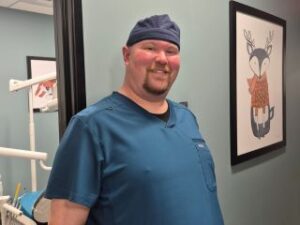 Enrollment in the Affordable Care Act has been picking up swiftly throughout December and January, but contrary to expectations, more than half of the new enrollees are 45 or older, according to a report released by the Obama Administration on Jan. 13.1 Considering how much of an emphasis the administration put on getting younger people to sign up for health insurance, the fact that older people have constituted such a large proportion of enrollments can be seen as a bit of a disappointment. Nonetheless, with a reported 2.2 million people having signed up for insurance under the new law through Dec. 28, it appears the ACA is beginning to make its mark in the American health care market.
Enrollment in the Affordable Care Act has been picking up swiftly throughout December and January, but contrary to expectations, more than half of the new enrollees are 45 or older, according to a report released by the Obama Administration on Jan. 13.1 Considering how much of an emphasis the administration put on getting younger people to sign up for health insurance, the fact that older people have constituted such a large proportion of enrollments can be seen as a bit of a disappointment. Nonetheless, with a reported 2.2 million people having signed up for insurance under the new law through Dec. 28, it appears the ACA is beginning to make its mark in the American health care market.
Insurance enrollment picking up
October and November – the first two months the health insurance exchanges were open to the public – saw rather anemic enrollment numbers, mainly due to glitches on the federal government’s insurance portal, HealthCare.gov. But as those problems were resolved, more people began signing up. Much of that increase was driven by older Americans, with one-third of new enrollees in the last three months of 2013 being between the ages of 55 and 64, according to the Department of Health and Human Services. The numbers only include the federal insurance exchange, which covers 36 states – 14 other states and the District of Columbia are operating their own exchanges.
Older enrollees may skew insurance premiums
One of the key components of the Affordable Care Act was the belief that it would lead to millions of younger, healthier Americans getting insurance. Their presence in the market would then drive down insurance premiums for everyone since they would offset the increased costs of caring for older people and individuals with previous health problems. That means the fact that so many older adults are making up a majority of enrollees could work against the effort to reduce costs, leading to higher premiums across the board.2 While that has some people alarmed, there are still three months of open enrollment left to go. In that time, the numbers could skew more evenly toward younger people as the March 31 deadline for enrollment approaches and young Americans come to understand the benefits of the law and see that the online portals are functioning properly.
State health insurance enrollment numbers
States have experienced uneven enrollment numbers over the first three months of their implementation. Wisconsin and West Virginia each reported that 45 percent of their current enrollees are older than 55. In Utah, on the other hand, only 25 percent of new enrollees fell into that demographic. In Texas, a little more than 118,000 people have signed up for private insurance plans, while in North Carolina, which has fewer than half as many residents, the numbers were almost the same, with nearly 108,000 people getting insurance in the final three months of 2013. California, the most populous state in the country and one of the 14 that is running its own exchange, has seen nearly half a million people enroll in that same period.
Enrollment details still vague
Although the numbers released by the Obama administration are telling in terms of the increase in enrollments over the course of the first three months of the exchanges being open, there is still plenty of information that is missing. Of the 2.2 million new enrollees, the number who have paid their first premium – which is a better indicator of how many of them will actually end up getting insurance – was not revealed.3 Approximately 3 million more people have filled out insurance applications through exchanges since Oct. 1, and been deemed eligible for coverage, but have yet to officially sign up. The number of new enrollees who were previously uninsured also has yet to be released.
Impact of recent report on health care jobs
The administration’s report signals that, at least initially, health care professionals, including certified medical assistants and pharmacy technicians, will be dealing with an older population of patients than had been originally forecast. That means services intended for older adults – such as diabetes care and prevention, cancer screenings and pharmaceuticals intended to treat various illnesses related to aging – will likely be in more demand than many health professionals thought. However, the overall lack of information and the continuing disparity in enrollment between different age groups and regions means that health care professionals are going to have to stay on top of developments in their geographic location and area of expertise. While the reality of the Affordable Care Act is beginning to catch up with its expectations, there is still a long way to go before hospitals, clinics and physicians will have a clear handle on its various effects. 1 Wayne, Alex, “Obamacare Customers Skew Older and Young Invincibles Wait to See,” BloombergBusinessweek, Jan. 13, 2014. http://www.businessweek.com/news/2014-01-13/obamacare-customers-skew-older-as-young-invincibles-wait-to-see 2 Radnofsy, Louise, “Over Half in New U.S. Insurance Exchanges are 45 or Older,” The Wall Street Journal, Jan. 13, 2014. http://online.wsj.com/article/BT-CO-20140113-711162.html 3 Levey, Noam, “Enrollment Surge Continues For Obamacare Health Coverage,” Los Angeles Times, Jan. 13, 2014. http://www.latimes.com/nation/politics/politicsnow/la-pn-enrollment-surge-continues-obamacare-20140113,0,2522913,full.story#axzz2qJGS4aBh



